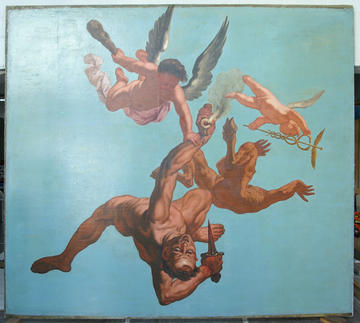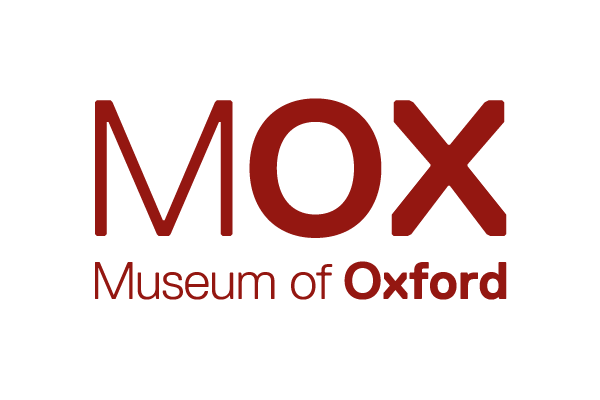Oxford Re-Formed: A New Digital Exhibition
On 13 January 2022 a new digital exhibition entitled ‘Oxford Reformed’ was launched on the website of the Museum of Oxford. [See https://moxdigiexhibits.omeka.net/exhibits/show/oxford-re-formed] Its five curators - Professors Susan Doran, Paulina Kewes, and William Whyte, together with D. Phil. students Christopher Archibald (English L) and Anna Clark (History) – have assembled images and texts that reveal how the sixteenth-century Reformations have been remembered and reimagined in Oxford over the past five hundred years. We show how these memories, shaped by the religious tensions and controversies of their own day, re-formed the physical fabric of Oxford. Additionally, we link the exhibition to the Opening Oxford 1871 project (https://openingoxford1871.web.ox.ac.uk/home) and trace how from being first a Catholic and then a Protestant stronghold, Oxford has gradually become more tolerant and global in its outlook and reach.
The immediate impact of the Reformations on the fabric of Oxford is a familiar story, but religious controversies and conflicts did not end there. Different types of Protestants wrangled over the look of the city’s churches for centuries afterwards, some attempting to recover its pre-Reformation fabric, others condemning altars, reredoses, statues, and ornaments as ‘popish’. As we demonstrate, traces of these disputes can still be detected. Over the porch of the Protestant University Church of St Mary the Virgin, for example, is the unexpected figure of the Virgin Mary and Child, which was introduced as part of Archbishop Laud’s controversial campaign to beautify churches in the 1630s. Inside St Michael’s at the North Gate is the Lady Chapel which was a site of conflict between its vicar and supporters of the nineteenth-century Oxford Movement. Only after the vicar’s death, was a Victorian restoration allowed which saw the empty niches of the reredos filled with statues of the Virgin and Child, St Frideswide, and St Mildred that Evangelicals denounced as ‘papist’.

Detail from inside the Sheldonian Theatre
The Oxford Movement stamped its presence on numerous buildings and monuments in the city, many of which are represented in the exhibition, including Keble College, Pusey House, and memorials to Cardinal John Henry Newman, the Movement’s leader who later converted to Catholicism. The statue of Cardinal William Allen on the High Street façade of Oriel College’s New Building, which opened in 1911, is another instance. As a Catholic propagandist who welcomed the Spanish Armada against Elizabeth I, this choice of statue might be thought odd. But it is there because Oriel was the home of the Oxford Movement and Allen symbolized continuity with a pre-Reformation past that the Movement esteemed, since he had been head of the mediaeval St Mary’s Hall, which was incorporated into Oriel in 1902.
The fervent anti-Catholicism spawned by the Protestant Reformations has also left its mark on Oxford’s fabric. It is evidenced not just in the iconic Martyrs’ Memorial, but also in the ‘No Peel’ slogan, hammered into a door at Christ Church because of some Protestants’ fury at their MP Sir Robert Peel’s ‘betrayal’ in supporting Catholic Emancipation in 1829. As more Catholics came to Oxford to settle or study, however, Catholic institutions filled Oxford’s cityscape. New churches were built, such as the Oratory Church of St Aloysius Gonzaga (completed in 1875) with its fresco illustrating the life cycle of Edmund Campion SJ and its elaborate reredos featuring other Catholic saints, some of whom were martyred during the Henrician and Elizabethan Reformations. After the University opened its doors fully to Catholics in 1871 and the Pope lifted his ban on Catholics studying at Oxford in 1896, new Catholic halls were opened in the city: Campion Hall in 1896, St Benet’s in 1898, and the now defunct Greyfriars in 1910.
It also took time for Protestant Dissenters to be accepted in Oxford. Baptists and Quakers had briefly enjoyed religious freedoms during the Interregnum, setting up their own meeting houses in the city, but all changed when the Anglican Church was re-established, and Tests Acts introduced after the restoration of the monarchy in 1660. The Sheldonian Theatre, finished in 1669, can be seen as an edifice representing the triumph of the Anglican Church, its ceiling depicting an allegory of Truth expelling ignorance that symbolizes the new exclusion of Dissenters and freethinkers from the University. Dissenters returned to the University as full members in 1871 along with other non-Anglicans. Fifteen years later Mansfield became the first nonconformist college to be established in Oxford, followed in 1892 by Manchester (now Harris Manchester) College. Our exhibition takes viewers into the chapels of both colleges to see some of their stained-glass windows, including the exquisite Pre-Raphaelite one at Harris Manchester.
The persecution of religious groups in Oxford predated the Reformation, and in 1931 the City Council erected a plaque to commemorate the first recorded martyr here, a convert to Judaism who was burned at the stake at Osney Abbey in 1222. Post-Reformation Oxford martyrs have their own memorials and plaques. The Martyrs’ Memorial (completed 1843) in St Giles commemorating the three high-profile Protestants burned under Mary I is fervently anti-Catholic, reflecting concerns about Catholic emancipation and creeping ‘popery’ through the Oxford Movement. This century, the Latin Mass Society initiated a project which saw the erection of plaques in Holywell Street and at Oxford Castle to commemorate the five Catholic martyrs executed under Elizabeth I and James I. A welcome ecumenical memorial was set up in the University Church in 2008 that names the 23 Protestants and Catholics with connections to Oxford who died for their faith between 1539 and 1681. All these memorials are illustrated and elucidated in our exhibition.
As well as a site of religious Reformations, Oxford is a site of Empire. As we found in putting together the exhibition, the two went hand in hand. Whether in the stained-glass windows commemorating imperial heroes or in the collections amassed by missionaries now in our museums, it is almost impossible to separate imperial traces from the religious history of the city. Moreover, people from across the British Empire came to Oxford to study, including Oronhyatekha, the first indigenous scholar at the University in 1862, and Cornelia Sorabji, the first Indian woman at the University, who entered Somerville in 1889. Their photos are in the exhibition too. Oxford’s strong links with India are seen in the carving of Mahatma Gandhi, probably installed in the roof of the University Church after his visit to Oxford in 1931, and the symbols of the subcontinent on the one-time Indian Institute, now housing the Oxford Martin School.
I think I can say on behalf of my fellow co-curators that we have learned an enormous amount from putting together this exhibition. It has opened our eyes to the extraordinarily complex and rich history of Oxford’s physical fabric. We hope ‘Oxford Re-formed’ will have the same effect on all those who visit the digital site.
Susan Doran,
Professor of Early Modern British History and Senior Research Fellow
Jesus College and St Benet’s Hall.




